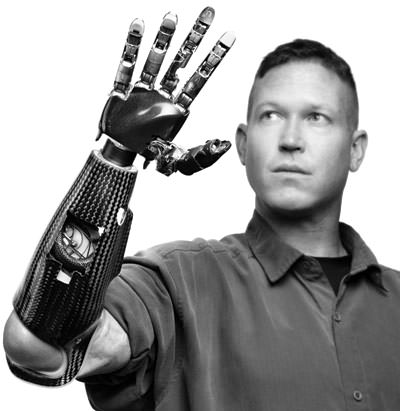Pulling the ‘Science’ from Science-Fiction
Technologies seen in movies like “Avatar” and “Pacific Rim” may not be limited to fiction.
By: Marc Posth, Staff Writer
Thanks to the imaginations of James Cameron and Guillermo Del Toro, we have recently been able to catch a glimpse of the future of from mind control technologies and body improvements. Whether it is taking control of an alien avatar to better adapt to foreign environments or syncing up with a friend to control a gigantic robot, the fiction has no bounds. Yet how close are we to developing such technologies today?
Surprisingly, scientists around the world have decided to bring fiction to reality, taking small steps towards the grandiose visions we see at the cinema.
For example, recently the U.S Department of Defense has granted funds towards proper brain-controlled prosthetic and bionic arms. Fighting wars all around the world has, quite unfortunately, given rise to a significant number of casualties amongst soldiers, many of whom are severely handicapped. Enter Darpa’s research of Reliable Neural-Interface Technology.
DARPA’s RE-NET (admittedly sounding like something out “Lost”), gives hope to soldiers whom have lost their arms or legs in war by enabling them to have minimal control of artificial limbs. This lets patients have more flexibility in their daily-tasks. Scientists have gone as far has having patients feel roughness on surfaces and sensing pressure. In the future, this would mean a wider range of bionic appendages, and there is the possibility that they could be available to the general public.
However, controlling an arm or a leg is nowhere near the equivalent of being inside the mind of an alien avatar on a distant planet in order to infiltrate a local population – baby steps.
What about to those that stepped out of “Pacific Rim?” Could we see the day where we team up with a buddy to control a giant robot? Barring possibilities on next-generation consoles, scientists have begun to attempt similar technologies in the creation of PLOS ONE, to a certain extent.
[pullquote]… all of these developments are scientists challenging what was once considered impossible.[/pullquote]
With PLOS ONE, scientists are aiming to develop a neural brain-computer-brain link between the brains of a human and that of a rat. A situation a little different from Del Toro’s Jaeger robots, unless you have a very low opinion of the person you are choosing to team up with to fight world-ending monsters. Essentially, signals from the human brain are transferred to the rat and converted into motor functions –anything that involves physical movement. What would be the benefits of such breakthrough technologies?
Apart for the obvious cinematic re-enactments, all of these developments are scientists challenging what was once considered impossible. Though financial advantages may not be directly perceived, money tends to not be the primary reason why scientists conduct their research.
Maybe in the far off future, controlling animals and having them fight will be a hit reality show; however, DARPA’s RE-NET seems to be the most applicable science-fiction technology today. With hundreds of soldiers being handicapped from war, to people growing old and requiring better motor functions for their jobs, it seems that the profits lie there.
In fact, Ossur is a bio-medical company based in Iceland that already draws a market for its bionic amelioration’s. Maybe one day they will become mainstream and affordable.
–
Sources:
Box Office Mojo
Össur
PLOS ONE
Singularity Hub
Photo Courtesy of the Institute for Ethics & Emerging Technologies





























Share the post "Pulling the ‘Science’ from Science-Fiction"